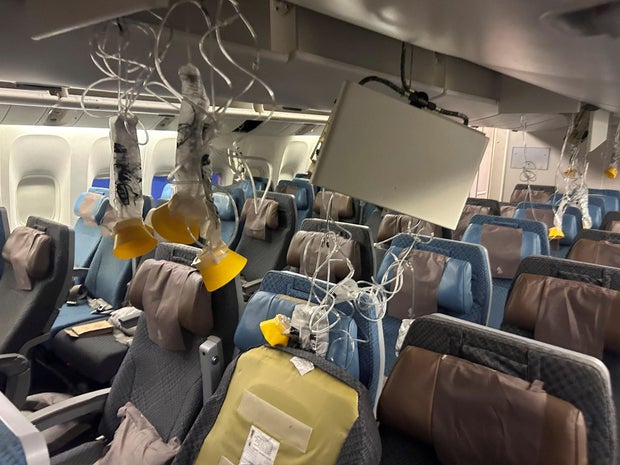Video and passenger accounts have depicted a scene of pandemonium aboard Singapore Airlines Flight SQ321 following the aircraft’s encounter with what the airline termed “sudden extreme turbulence.”
The incident resulted in the death of one individual. The passenger, a 73-year-old British male, is believed to have suffered a heart attack, according to authorities. Numerous additional passengers sustained injuries. As previously reported by News, six individuals were treated for grievous injuries following the plane’s emergency landing in Bangkok, Thailand.
The incident has underscored the potential hazards that turbulence can present. Clear-air turbulence is a particular form of turbulence that can be particularly challenging for pilots. The following information pertains to clear-air turbulence:
air turbulence. What is the definition of
lear-air turbulence?According to Hassan Shahidi, the president and CEO of the Flight Safety Foundation, clear-air turbulence is a phenomenon that is “typically very violent” and occurs at high altitudes, typically between 23,000 and 39,000
feet above sea level.Contrary to convective turbulence, which is a result of the weather, clear-air turbulence is dangerous because it is invisible in advance. Shahidi stated that flights typically divert or enter a holding pattern to prevent severe turbulence. However, if the turbulence is not visible in advance,
Aircraft frequently fly through jet streams, which are air masses. Daniel Adjekum, a pilot and aircraft safety consultant who teaches at the University of North Dakota and holds a doctorate in aerospace sciences, stated that there are numerous layers of air flowing at varying speeds within those streams, “almost on top of each other.” The differences in temperatures are what cause friction. The friction, in turn, generates “a significant amount of disruption,” according to Adjekum.
In convective turbulence, which is induced by cyclones or other weather conditions, the air is heated and displaced, resulting in a high moisture content that is readily apparent on flight instruments. Adjekum stated that radar and other instruments are unable to detect clear-air turbulence until it is too late, as it does not have a high moisture content.
Adjekum stated, “That is what renders it extremely pernicious.”
Climate change is also a factor. Carbon dioxide emissions are causing warmer air, which in turn is causing stronger wind shear at higher elevations. This can contribute to clear-air turbulence. Clear air turbulence has increased by 41% over the past 40 years, according to a 2023 study.
Is the chaos onboard Flight SQ321 the result of clear-air turbulence?
The scene aboard Singapore Airlines’ Flight SQ321 was the subject of hesitation among experts regarding whether clear-air turbulence was the cause. The aircraft “encountered sudden extreme turbulence,” according to the airline, which claimed that the fatalities and injuries aboard the aircraft were the result of this.
The airline stated that the aircraft was flying at 37,000 feet, which is within the range of clear-air turbulence. However, experts have identified thunderstorms in the vicinity that could have been the cause of the turbulence.
Robert Sumwalt, a pilot and former chief of the National Transportation Safety Board, stated on CBS Evening News that it is “too early to determine the exact cause” of the incident.
An investigation is currently ongoing.
Is there a turbulence forecast for calm air?
Forecasting clear-air turbulence is challenging due to its unpredictable nature, despite its prevalence during the winter season.
The optimal approach to anticipating the phenomenon is to remain securely fastened during flight, according to experts.
According to Adjekum, it is imperative to fasten your seatbelt if you are not actively moving within the cabin. All passengers are required to promptly return to their seats in the event that the pilot activates a fasten seatbelt sign.

